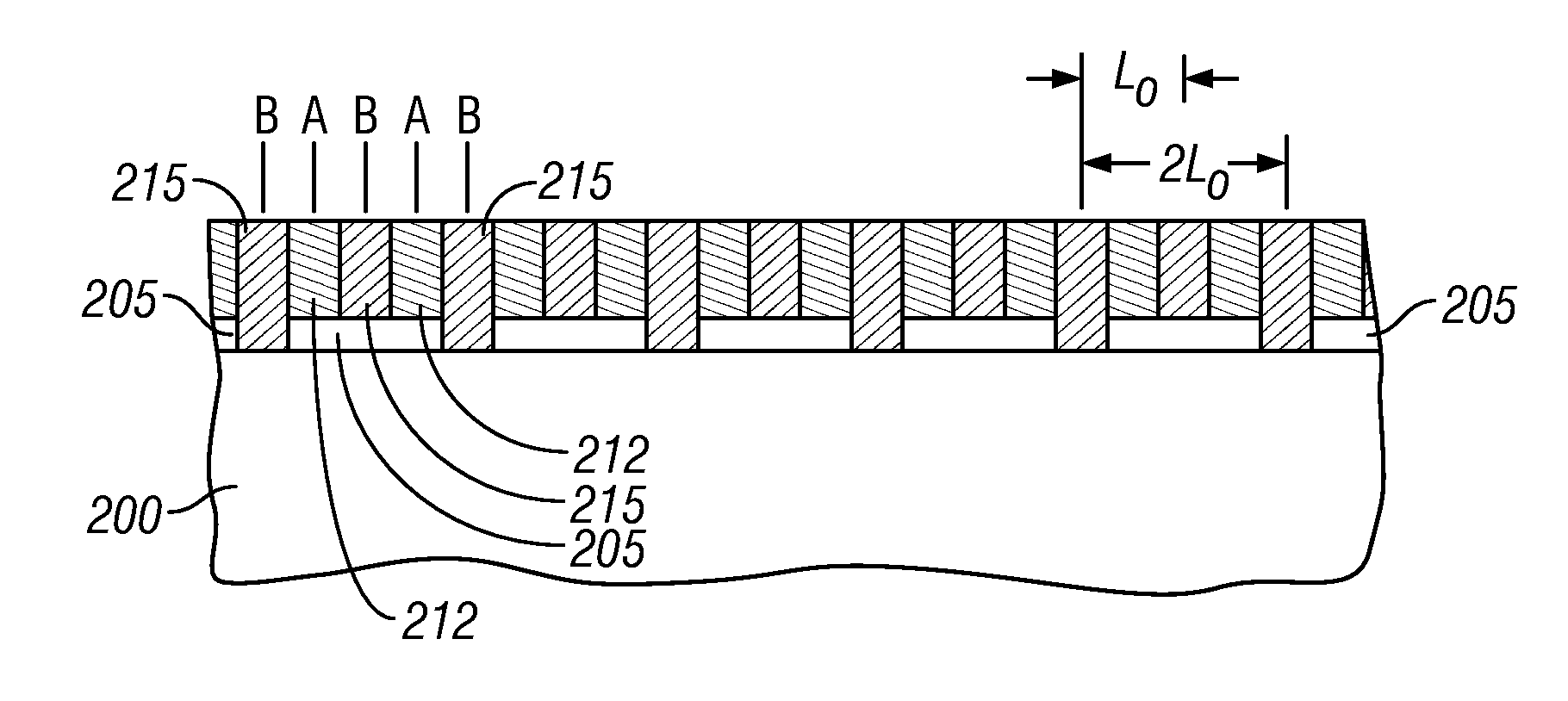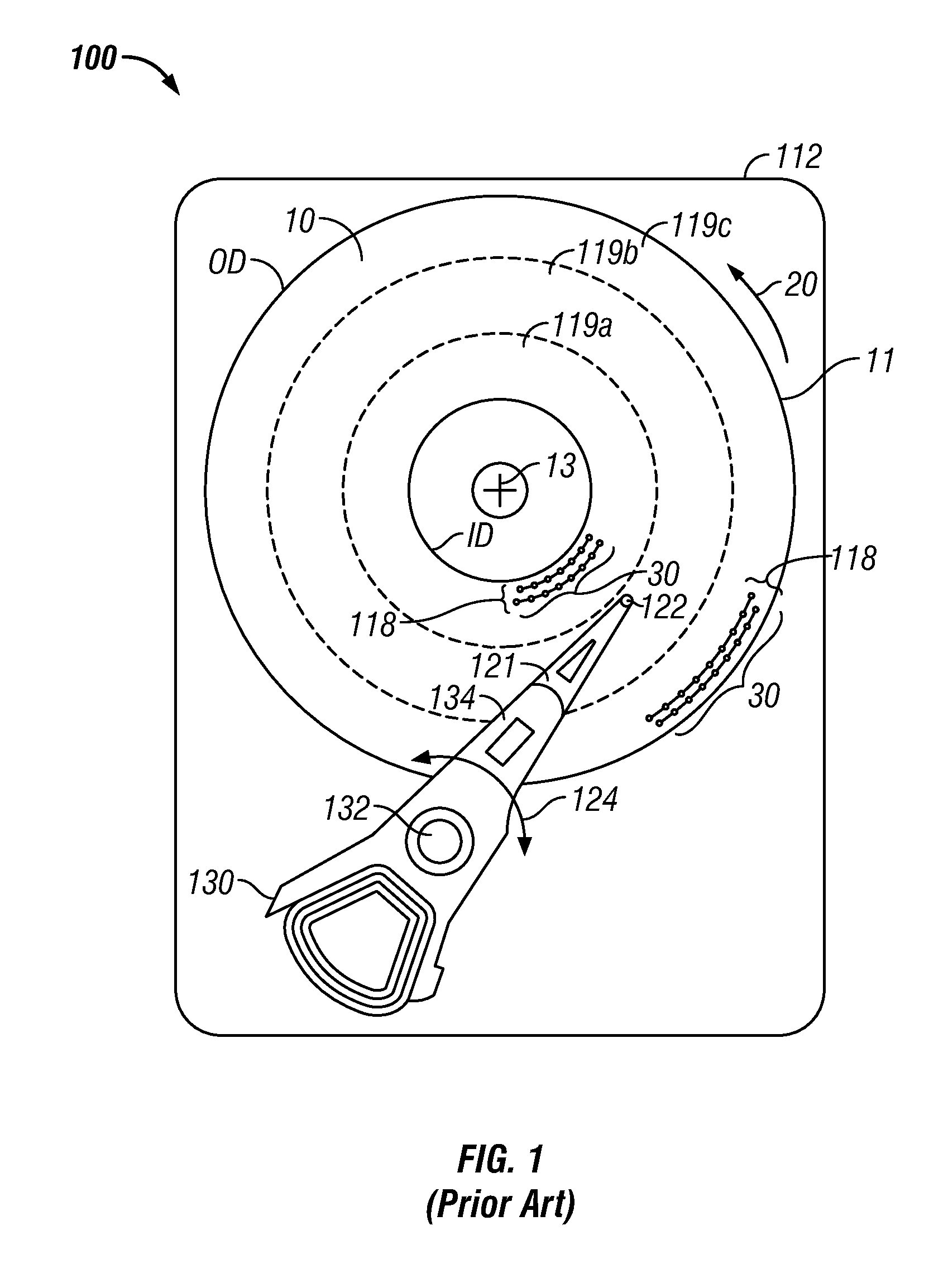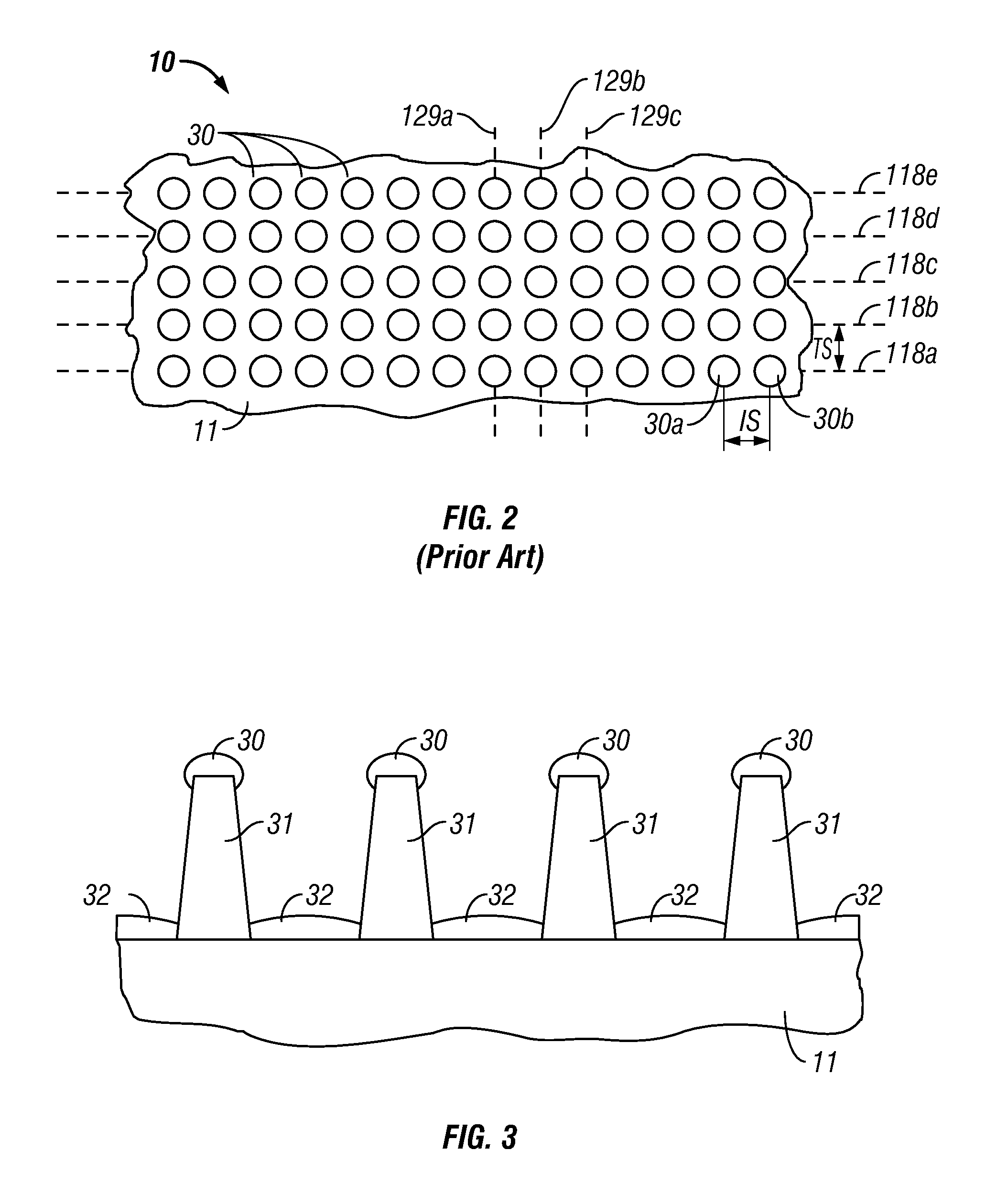Method using block copolymers for making a master mold with high bit-aspect-ratio for nanoimprinting patterned magnetic recording disks
a technology of patterned media and block copolymer, which is applied in the field of making master molds, can solve the problems of difficult and difficult process of master template or mold, and the resolution of e-beam lithography cannot achieve the master mold capable of nano-imprinting patterned media disks with an island pitch of 12.5 nm over an area equal to the data area of a disk, and achieves the effect of ultra-high areal density
- Summary
- Abstract
- Description
- Claims
- Application Information
AI Technical Summary
Benefits of technology
Problems solved by technology
Method used
Image
Examples
first embodiment
[0039]A first embodiment of the method of this invention for making the master mold uses conventional optical or e-beam lithography to form a pattern of generally radial stripes on a substrate, with the stripes being grouped into annular zones or bands. A block copolymer material is deposited on the pattern, resulting in guided self-assembly of the block copolymer into its components to multiply the generally radial stripes into generally radial lines of alternating block copolymer components. The radial lines of one of the components are removed, leaving the radial lines of the remaining component to be used as an etch mask to etch the substrate. A protective layer is then deposited over the radial lines of the remaining component to prevent their movement during subsequent processing. Conventional lithography is then used to form concentric rings over the generally radial lines of the remaining component. After etching to remove portions of the remaining block copolymer component ...
second embodiment
[0053]A second embodiment of the method of this invention for making the master mold uses conventional optical or e-beam lithography to form a pattern of generally radial stripes on a substrate, with the stripes being grouped into annular zones or bands. A first block copolymer material with bulk period L0=Lrad is deposited on the pattern, resulting in guided self-assembly of the block copolymer into its components to multiply the generally radial stripes into generally radial lines of alternating block copolymer components. The radial lines of one of the components are removed, leaving the radial lines of the remaining component of the first block copolymer. A protective layer is then deposited over the radial lines of the remaining component of the first block copolymer to prevent their movement during subsequent processing. Then, a second block copolymer material with bulk period L0=Lcirc is deposited over these radial lines to define generally circumferential rings. The circumfe...
third embodiment
[0059]A third embodiment of the method of this invention for making the master mold uses conventional optical or e-beam lithography to form a pattern of generally radial stripes on a substrate, with the stripes being grouped into annular zones or bands. A block copolymer material with bulk period L0 is deposited on the pattern, resulting in guided self-assembly of the block copolymer into its components to multiply the generally radial stripes into generally radial lines of alternating block copolymer A and B components, as described in the first embodiment. Then an e-beam writer generates a high dose e-beam in a pattern of concentric rings which cross-links the A and B copolymers exposed to the high dose e-beam, resulting in concentric rings formed of cross-linked polymer material. The underlying radial lines of the B component are then removed, leaving the cross-linked concentric rings and underlying radial lines of the A component. This structure then serves as an etch mask to pa...
PUM
| Property | Measurement | Unit |
|---|---|---|
| circumferential width | aaaaa | aaaaa |
| OD | aaaaa | aaaaa |
| thickness | aaaaa | aaaaa |
Abstract
Description
Claims
Application Information
 Login to View More
Login to View More - R&D
- Intellectual Property
- Life Sciences
- Materials
- Tech Scout
- Unparalleled Data Quality
- Higher Quality Content
- 60% Fewer Hallucinations
Browse by: Latest US Patents, China's latest patents, Technical Efficacy Thesaurus, Application Domain, Technology Topic, Popular Technical Reports.
© 2025 PatSnap. All rights reserved.Legal|Privacy policy|Modern Slavery Act Transparency Statement|Sitemap|About US| Contact US: help@patsnap.com



